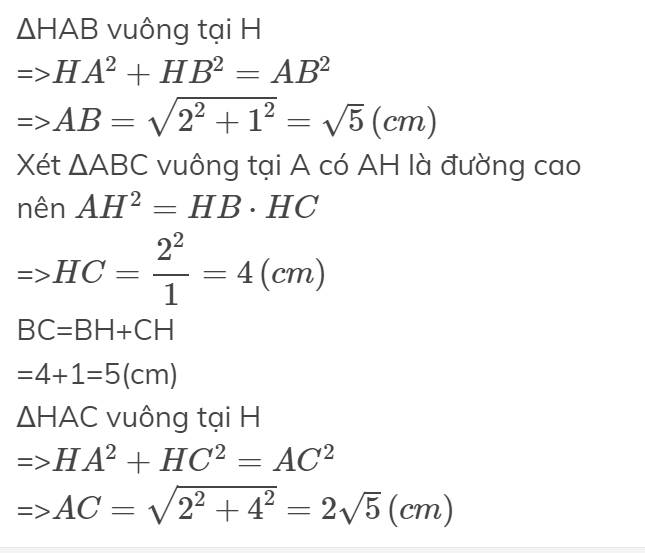1. Cho tam giác ABC vuông tại A, đường cao AH, đường trung tuyến AM ( H và M thuộc BC) . Biết
AB = 10cm , AH=8cm . Tính BC và diện tích tam giác AHM
2. một đội công nhân dự kiến may 1200 chiếc áo trong một thời gian nhất định ,do cải tiến kỹ thuật mỗi ngày tổ may thêm được 20 áo nên đã hoàn thành trước kế hoạch 2 ngày .Hỏi theo kế hoạch tổ phải may số áo trên trong bao nhiêu ngày. biết số áo may được mỗi ngày là như nhau




Bài 1:
Theo pytago ta có: HB2 + AH2 = AB2
⇒ HB2 = AB2 - AH2
HB2 = 102 - 82 = 36
HB = \(\sqrt{36}\) = 6 (cm)
Xét tam giác ABC và tam giác HBA có:
\(\widehat{BAC}\) = \(\widehat{BHA}\) = 900
\(\widehat{ABC}\) = \(\widehat{HBA}\)
⇒ \(\Delta\) ABC \(\sim\) \(\Delta\) HBA (g - g)
⇒ \(\dfrac{AB}{HB}\) = \(\dfrac{BC}{BA}\)
BC = \(\dfrac{AB}{HB}\) \(\times\) AB
BC = \(\dfrac{10.10}{6}\) = \(\dfrac{50}{3}\) (cm)
SABC = \(\dfrac{1}{2}\)BC \(\times\) AH = \(\dfrac{1}{2}\) \(\times\) \(\dfrac{50}{3}\) \(\times\) 8 = \(\dfrac{200}{3}\) (cm2)
Vì M là trung điểm của tam giác ABC nên
SABM = \(\dfrac{1}{2}\) SABC (hai tam giác có chung chiều cao hạ từ đỉnh A xuống đáy BC và BM = \(\dfrac{1}{2}\) BC)
SABM = \(\dfrac{200}{3}\).\(\dfrac{1}{2}\) = \(\dfrac{100}{3}\) (cm2)
SAHB = \(\dfrac{1}{2}\)AH.HB = \(\dfrac{8.6}{2}\) = 24 (cm2)
SAHB + SAHM = SABM
⇒ SAHM = SABM - SAHB
SAHM = \(\dfrac{100}{3}\) - 24 = \(\dfrac{28}{3}\) (cm2)
Kết luận: BC dài \(\dfrac{50}{3}\) cm; Diện tích tam giác AHM là \(\dfrac{28}{3}\) cm2